
Press Release
UNAIDS Board adopts bold and ambitious strategy to end the AIDS epidemic by 2030
30 October 2015 30 October 2015GENEVA, 30 October 2015—At its 37th meeting, the UNAIDS Programme Coordinating Board adopted a new strategy to end the AIDS epidemic as a public health threat by 2030. The UNAIDS 2016–2021 Strategy is one of the first in the United Nations system to be aligned to the Sustainable Development Goals, which set the framework for global development policy over the next 15 years, including ending the AIDS epidemic by 2030.
With a universal agenda, firmly grounded in evidence and rights-based approaches, the strategy maps out the UNAIDS Fast-Track approach to accelerate the AIDS response over the next five years to reach critical HIV prevention and treatment targets and achieve zero discrimination. Members of the Board from across all regions called the strategy bold, ambitious, yet achievable, and praised the highly inclusive and consultative process to develop it.
In his opening address, the Executive Director of UNAIDS, Michel Sidibé, described the strategy as an urgent call to front-load investment, to close the testing gap, to increase focus and financing for HIV prevention and to protect the health of the 22 million people living with HIV who are not yet accessing treatment. He said that the strategy would be an instrument for social justice and dignity.
“Our transformative strategy pushes us to cover more ground than ever before,” said Mr Sidibé. “It obliges us to address the critical linkages between health, injustice, inequality, poverty and conflict.”
The Board also approved UNAIDS’ operational framework and the Unified Budget, Results and Accountability Framework (UBRAF) for 2016–2021, which will translate the strategy into action at the national, regional and global levels. The strategy and UBRAF are powerful tools to accelerate the global AIDS response and guide the work of the Joint Programme.
The Board underlined the importance of innovation and partnership in tackling complex interconnected development and health challenges and stressed that the space the strategy and UNAIDS provides for discussion is unique.
During the dedicated thematic day, the Board discussed the importance of shared responsibility and global solidarity for an effective, equitable and sustainable HIV response. It was agreed that the most critical next step for achievement of the Sustainable Development Goals will be to have clarity on the means of implementation. Participants emphasized that multisectorality and equitable, transparent and inclusive governance are central bases for effective shared responsibility and global solidarity, and that the AIDS response—and in particular UNAIDS—provides an important model to be replicated for other health, development, gender and rights outcomes.
Representatives of Member States, international organizations, civil society and nongovernmental organizations attended the meeting, which was chaired by David Parirenyatwa, Minister of Health and Child Care of Zimbabwe. Switzerland served as Vice-Chair and Ukraine as Rapporteur. At the meeting, Switzerland was elected as the 2016 Chair, Ghana as Vice-Chair and Ecuador as Rapporteur.
The UNAIDS Executive Director’s report to the Board and the Board’s decisions can be found at unaids.org.
UNAIDS
The Joint United Nations Programme on HIV/AIDS (UNAIDS) leads and inspires the world to achieve its shared vision of zero new HIV infections, zero discrimination and zero AIDS-related deaths. UNAIDS unites the efforts of 11 UN organizations—UNHCR, UNICEF, WFP, UNDP, UNFPA, UNODC, UN Women, ILO, UNESCO, WHO and the World Bank—and works closely with global and national partners towards ending the AIDS epidemic by 2030 as part of the Sustainable Development Goals. Learn more at unaids.org and connect with us on Facebook, Twitter, Instagram and YouTube.
Press centre
Download the printable version (PDF)

Press Release
WHO and UNAIDS launch new standards to improve adolescent care
06 October 2015 06 October 2015GENEVA, 6 October 2015—New Global Standards for quality health-care services for adolescents developed by the World Health Organization (WHO) and UNAIDS aim to help countries improve the quality of adolescent health care.
Existing health services often fail the world’s adolescents (10-19-year-olds). Many adolescents who suffer from mental health disorders, substance use, poor nutrition, intentional injuries and chronic illness do not have access to critical prevention and care services. Meanwhile, many behaviours that have a lifelong impact on health begin in adolescence.
“These standards provide simple yet powerful steps that countries – both rich and poor – can immediately take to improve the health and wellbeing of their adolescents, reflecting the stronger focus on adolescents in the new Global Strategy for Women’s, Children’s and Adolescents’ Health that was launched in New York in September,” says Dr Anthony Costello, Director of Maternal, Children’s and Adolescents’ Health at WHO.
Adolescents form a unique group, rapidly developing both physically and emotionally but are often dependent on their parents or guardians. WHO and UNAIDS Global Standards for quality health-care services for adolescents recommend making services more “adolescent friendly”, providing free or low-cost consultations, and making medically accurate age-appropriate health information available. They also highlight the need for adolescents to be able to access services without necessarily having to make an appointment or requiring parental consent, safe in the knowledge that any consultation remains confidential, and certain that they will not experience discrimination.
“If we want to keep adolescents healthy, we have to treat them with respect,” says Dr Costello. “Adolescents are particularly vulnerable to certain health issues. The top three causes of death among adolescents are road traffic injuries, AIDS-related illnesses and suicide.
“AIDS is the leading cause of death among adolescents in Africa and the second primary cause of death among adolescents globally,” says Dr Mariângela Simão, Director of Rights, Gender, Prevention and Community Mobilization at UNAIDS. “All adolescents, including key populations, have a right to the information and services that will empower them to protect themselves from HIV.”
Not only is adolescence a period of life when people are particularly vulnerable to certain health issues, it is also a time when critical behaviours are shaped that will affect health in the future.
“So many behaviours – healthy or unhealthy – that impact the rest of our lives begin in adolescence,” adds Dr Costello. “The health sector cannot stand there and tell people they are sick because of the ways they use tobacco and alcohol, and their attitudes to diet and exercise, if it does not do a better job of helping people develop healthy habits as adolescents.”
Training health workers is critical.
Dr Valentina Baltag, adolescent health expert at WHO, says: “There are countries where every fifth citizen is an adolescent. Yet most students in medical and nursing schools graduate with no understanding of the specific needs of adolescents in accessing healthcare. This is unacceptable.”
The Global Standards for quality health-care services for adolescents call for an inclusive package of information, counselling, diagnostic, treatment and care services that go beyond the traditional focus on sexual and reproductive health.
Adolescents should be meaningfully involved in planning, monitoring and providing feedback on health services and in decisions regarding their own care.
More than 25 low- and middle-income countries have already adopted national standards for improving adolescent health services.
The global standards from WHO and UNAIDS are built on research from these countries, as well as feedback from health providers and more than 1000 adolescents worldwide. They are accompanied by an implementation and evaluation guide that outlines concrete steps that countries can take to improve health care for adolescents.
UNAIDS
The Joint United Nations Programme on HIV/AIDS (UNAIDS) leads and inspires the world to achieve its shared vision of zero new HIV infections, zero discrimination and zero AIDS-related deaths. UNAIDS unites the efforts of 11 UN organizations—UNHCR, UNICEF, WFP, UNDP, UNFPA, UNODC, UN Women, ILO, UNESCO, WHO and the World Bank—and works closely with global and national partners towards ending the AIDS epidemic by 2030 as part of the Sustainable Development Goals. Learn more at unaids.org and connect with us on Facebook, Twitter, Instagram and YouTube.
Press centre
Download the printable version (PDF)

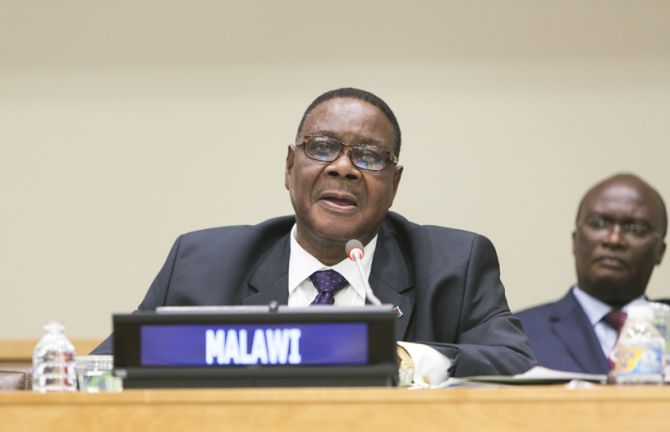
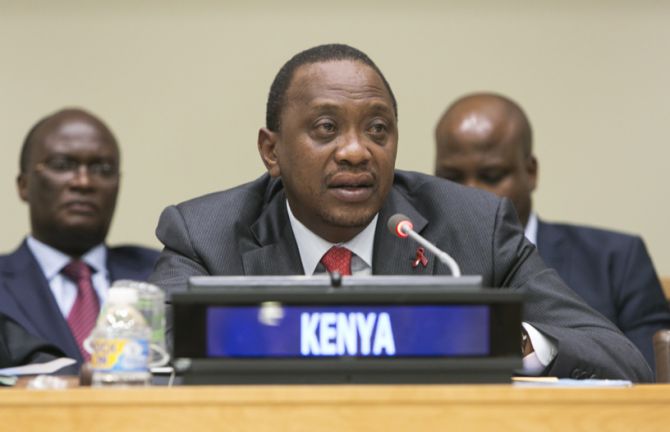
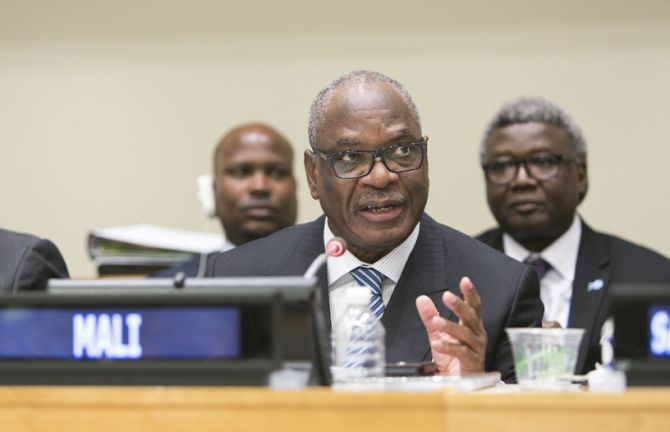
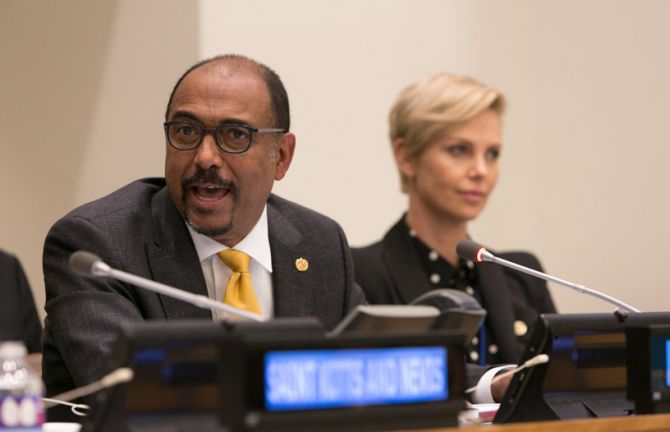
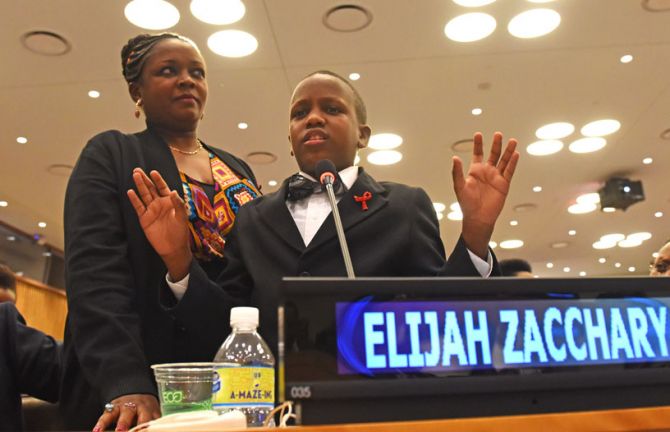
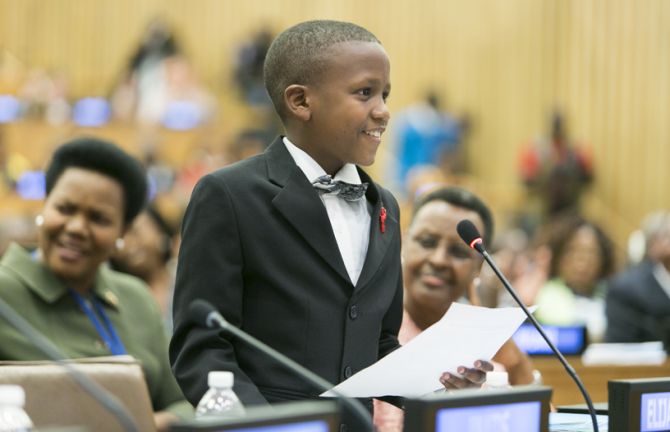
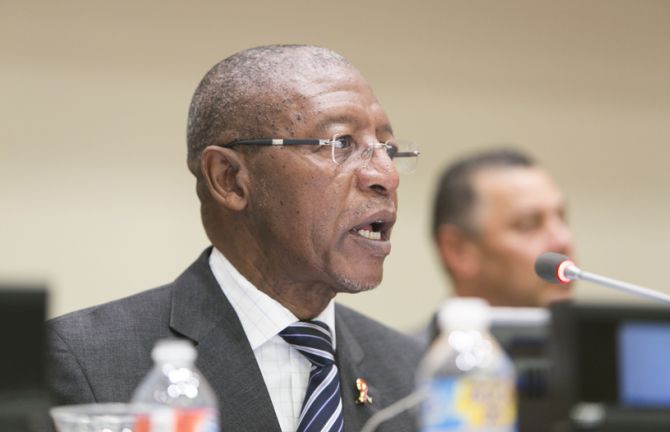
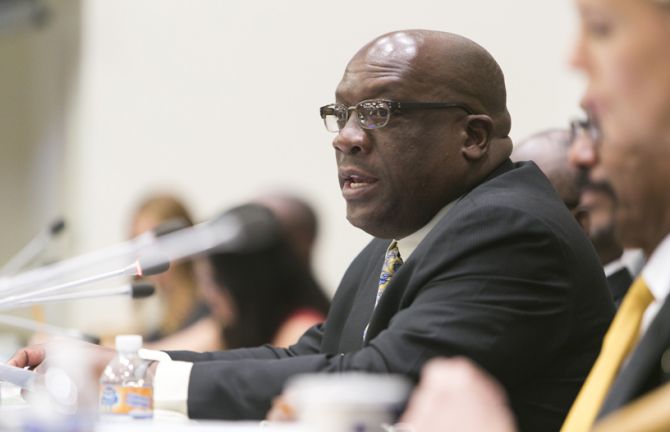
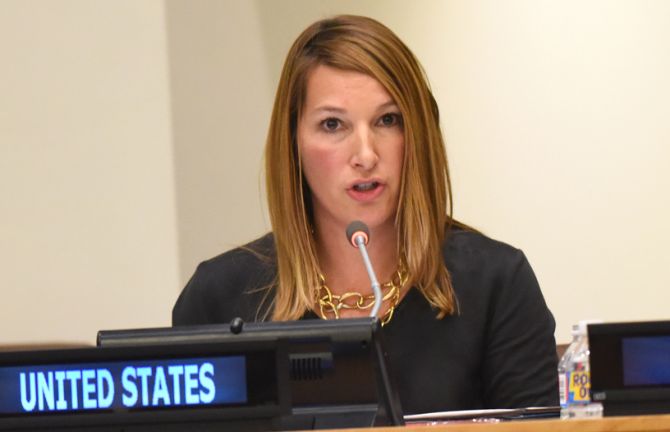
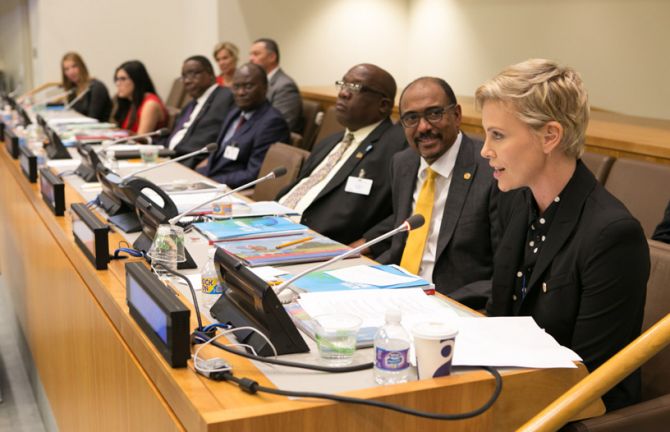
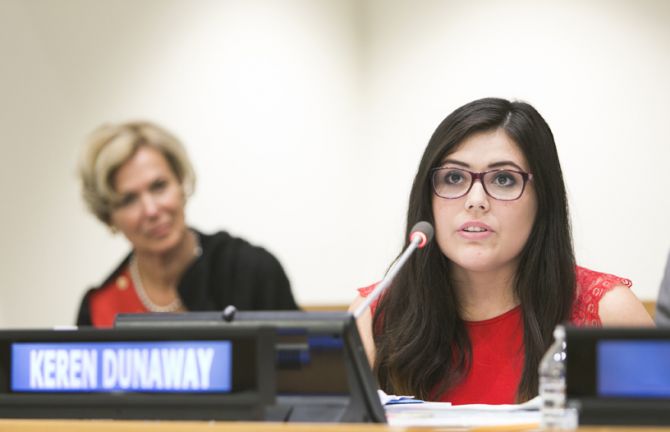
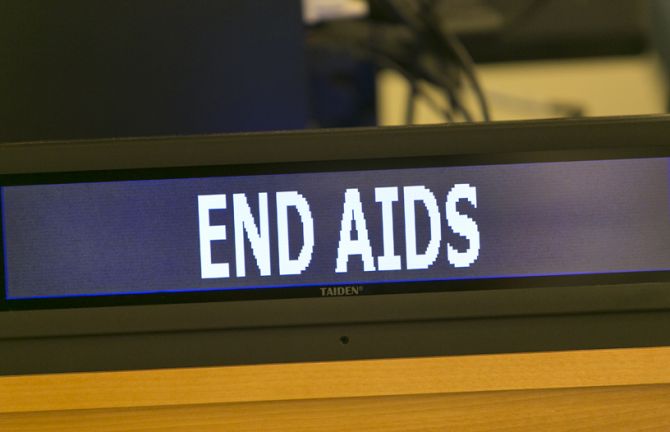
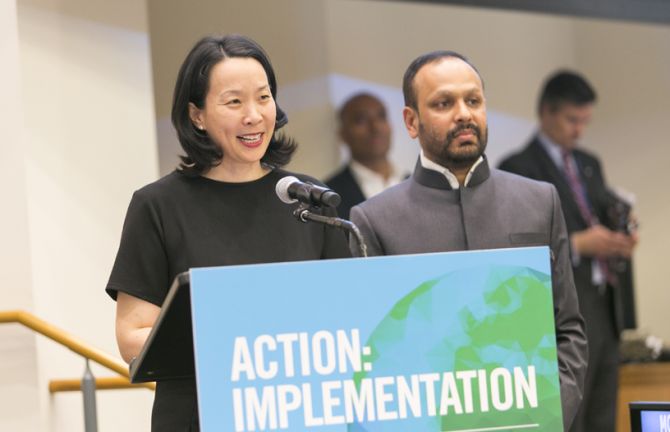

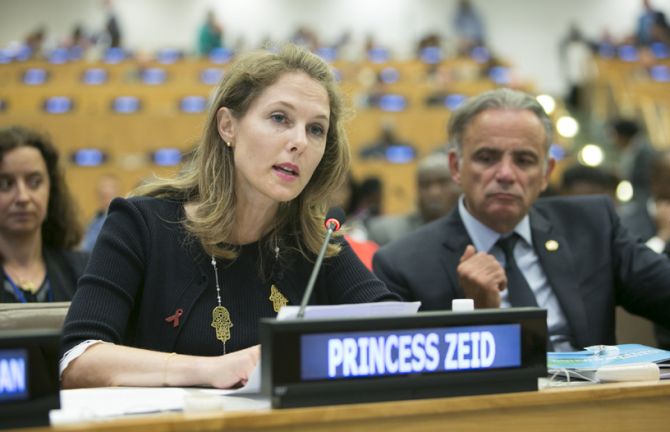
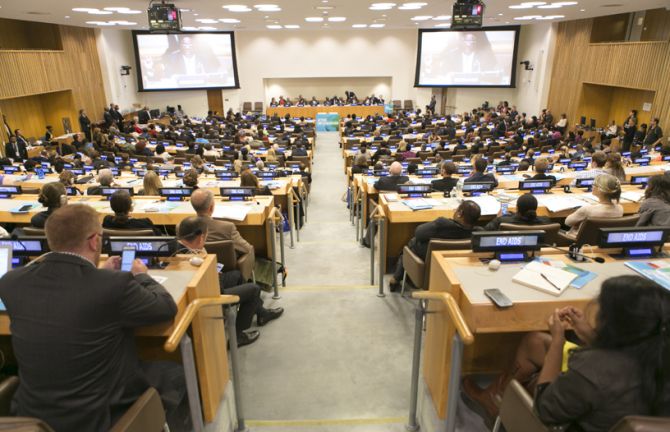
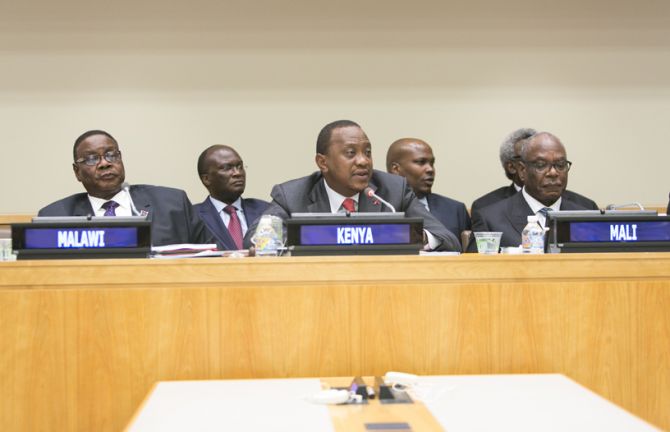
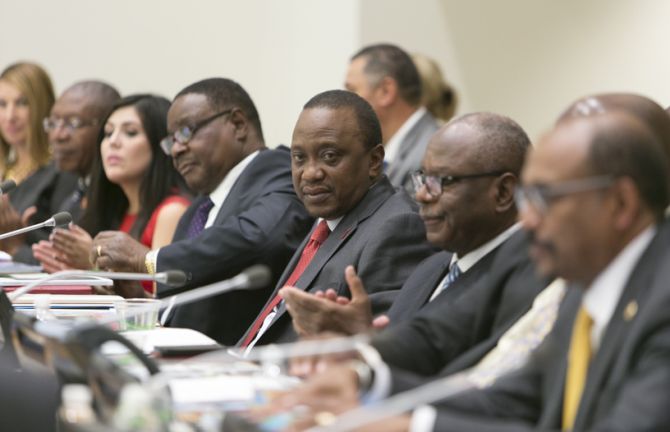
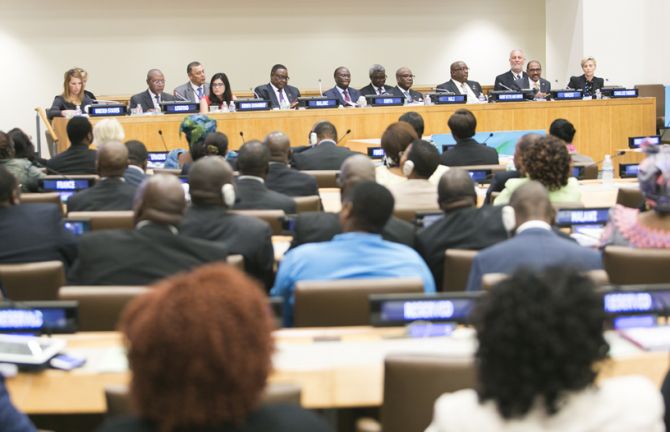

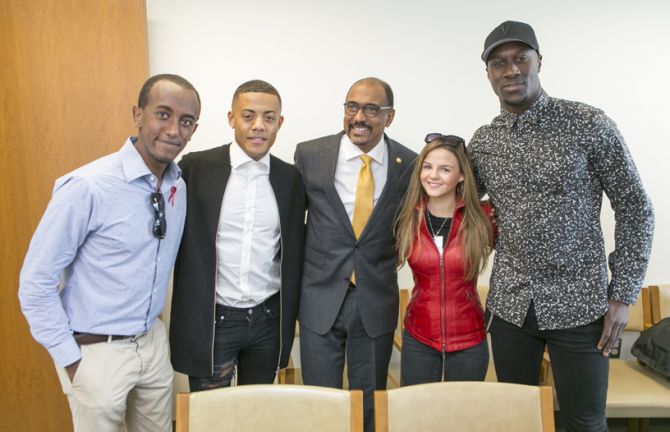
Press Release
World leaders call for accelerated action and smarter investments to Fast-Track the end of the AIDS epidemic
27 September 2015 27 September 2015Innovation and new means of implementation will ensure countries deliver on 2030 AIDS promises
NEW YORK/GENEVA, 27 September 2015—The Governments of Kenya and Malawi, together with UNAIDS, are leading an urgent call for new investment and improvements in health service delivery to put the world on course to ending the AIDS epidemic by 2030.
The call was made during a high-level event at the United Nations Headquarters in New York on the eve of the historic seventieth session of the United Nations General Assembly. Leaders from around the world gathered at the event to pledge their support and commitment to the UNAIDS Fast-Track approach and to finding new and innovative ways of delivering essential health care to people most in need.
“We believe we are on the right track, but reaching the Fast-Track Targets won’t be easy,” said President Peter Mutharika of Malawi. “We must expand and scale up HIV services. Malawi is ready to see this journey through and end AIDS by 2030.” Malawi has already taken bold steps to reach its targets, having recently announced that it will provide antiretroviral therapy to everyone living with HIV as of April 2016.
The AIDS response to date has been the most successful response to any modern epidemic. There have been massive reductions in new HIV infections and AIDS-related deaths over the past 15 years and more than 15 million people now have access to antiretroviral therapy.
To take the AIDS response forward, UNAIDS has developed a Fast-Track approach to reach a set of time-bound targets by 2020. The targets include 90% of all people living with HIV knowing their HIV status, 90% of people who know their status having access to treatment and 90% of people on treatment having supressed viral loads. They also include reducing new HIV infections by 75% and achieving zero discrimination.
“Over the last decades we have made great progress in combatting AIDS but it is still unfinished business,” said President Uhuru Kenyatta of Kenya. “We must all continue to galvanize additional resources for the AIDS response, both international and domestic. We must invest in HIV prevention, care and treatment services because there is simply no other option.”
The massive scale-up of services over the past 15 years has resulted in 30 million new HIV infections and 8 million deaths averted over the last 15 years.
“It is no longer a dream; we have to believe that we can end AIDS. Unfortunately many people still continue to be stigmatized and we just need to push from every front to make sure that no one is left behind,” said President Ibrahim Boubacar Keïta of Mali.
Putting people at the centre was one of the ways identified as essential to ending the AIDS epidemic. Where people at higher risk of HIV infection and people living with HIV are empowered to realize their human rights, uptake of HIV services has increased.
“I believe the AIDS epidemic can be ended within the next 15 years,” said Michel Sidibé, Executive Director of UNAIDS. “Now, more than ever, we need means of implementation that are smart, efficient, sustainable and, most importantly, people-centred.”
Without inclusion and equity, key populations and young people will continue to be left behind. The meeting heard from Elijah Zacchary, a 12-year-old Kenyan boy living with HIV, who spoke of his hopes for the future. “Presidents, thank you for making the promise to end AIDS by 2030, but we must make sure that all children have access to treatment,” said Elijah. “My dream is that by the time I am 27 years old there shall be no more stigma and I am still able to take my medication every day.”
The leaders called for greater engagement of communities and innovative, community-led approaches to the delivery of health services. Innovation in community delivery is breaking the logjam in the capacity of health services to deliver life-saving prevention and treatment services and needs to be adequately funded and supported.
“To end AIDS in Lesotho, we need to integrate HIV into primary health care, adequately resource our best foot soldiers—the village health workers—mobilize communities through innovative approaches advocated by our Majesty the King and better coordinate support from our partners,” said Pakalitha Mosisili, Prime Minister of Lesotho.
Big challenges remain to end the epidemic. Of the 36.9 million people living with HIV globally 17.1 million do not know they have the virus and need to be reached with HIV testing services, and around 22 million do not have access to HIV treatment, including 1.8 million children.
“We in the Caribbean believe that we can be the first region in the world to end AIDS. Going forward with this aspirational goal requires increased investment, which is part of the global solidarity that we are here for today,” said Timothy Harris, Prime Minister of Saint Kitts and Nevis.
At current levels, there is an annual gap of US$ 12 billion globally between the resources available and the resources needed to reach the UNAIDS 2020 Fast-Track Targets and end the AIDS epidemic by 2030.
Earlier in the day, President Barack Obama spoke at the Sustainable Development Summit and announced that the United States of America had set new targets to reach more people with life-saving HIV prevention and treatment services, with a particular focus on young women and adolescent girls.
Heather Higginbottom, Deputy Secretary of State for Management and Resources of the United States, said, “We stand together to celebrate that progress, to demonstrate our collective resolve, and to meet the challenge before us in the new global goals: to end the AIDS epidemic by 2030.”
Over the next five years the AIDS response requires front-loading investments and increasing the diversity of investment, innovative delivery mechanisms and partnerships to ensure that no one is left behind, especially adolescents, young people and key populations. Ensuring commodity security to sustain the AIDS response, focusing on locations, populations and programmes that deliver the greatest impact and addressing discrimination and gender inequality and committing to people-centred approaches grounded in human rights will reap huge benefits by 2030: 21 million AIDS-related deaths averted; 28 million new HIV infections averted; and 5.9 million new infections among children averted.
“There is a generation in jeopardy. Young people are falling through the cracks in the AIDS response," said Charlize Theron, Messenger of Peace for the United Nations and founder of the Charlize Theron Africa Outreach Project. “But there is reason to hope, we know what works—empowering young people to take care of their health.”
Karen Dunaway, a young woman from Honduras living with HIV, said, “We adolescents and young people should have the space to participate meaningfully in decision-making at all levels, including policy-making and implementation. Governments must work with civil society and young people to ensure accountability. Together we must break the prejudice and stigma so that all young people have access to services.”
Better health outcomes will support the entire Sustainable Development Goals framework and not only lead to healthier lives, but also help alleviate poverty, reduce discrimination and improve economic security.
UNAIDS
The Joint United Nations Programme on HIV/AIDS (UNAIDS) leads and inspires the world to achieve its shared vision of zero new HIV infections, zero discrimination and zero AIDS-related deaths. UNAIDS unites the efforts of 11 UN organizations—UNHCR, UNICEF, WFP, UNDP, UNFPA, UNODC, UN Women, ILO, UNESCO, WHO and the World Bank—and works closely with global and national partners towards ending the AIDS epidemic by 2030 as part of the Sustainable Development Goals. Learn more at unaids.org and connect with us on Facebook, Twitter, Instagram and YouTube.
Contact
UNAIDS New YorkSophie Barton-Knott
tel. +41 79 514 6896
bartonknotts@unaids.org
UNAIDS Geneva
Michael Hollingdale
tel. +41 79 500 2119
hollingdalem@unaids.org
Press centre
Download the printable version (PDF)

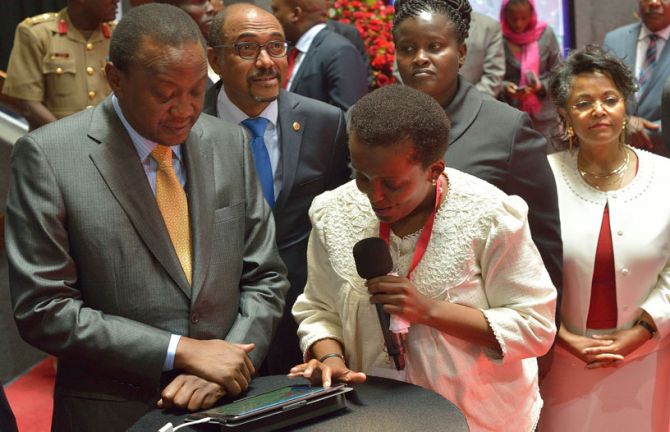
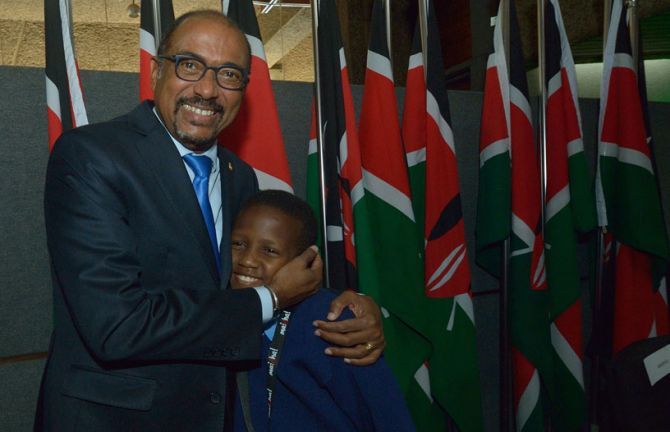
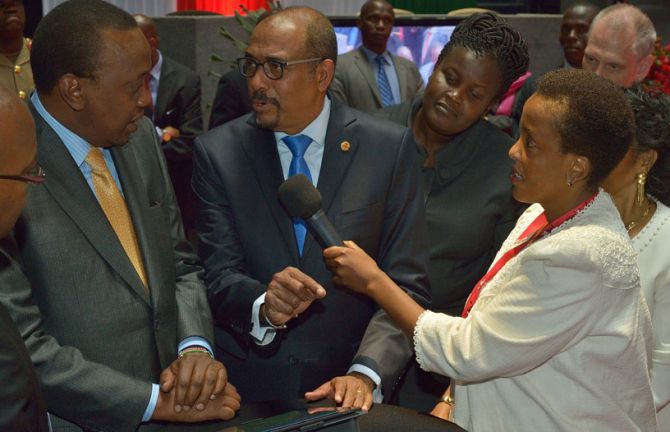
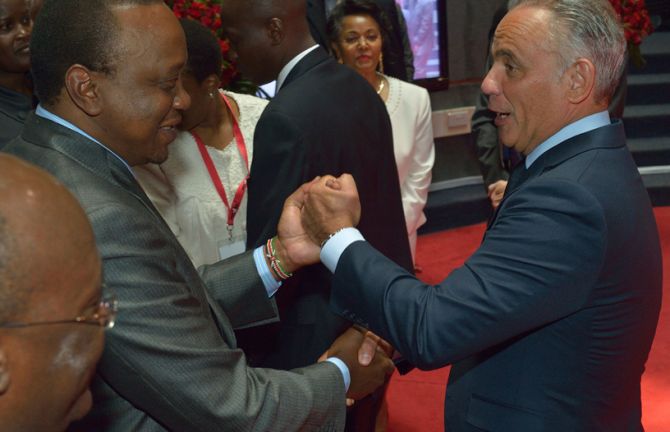
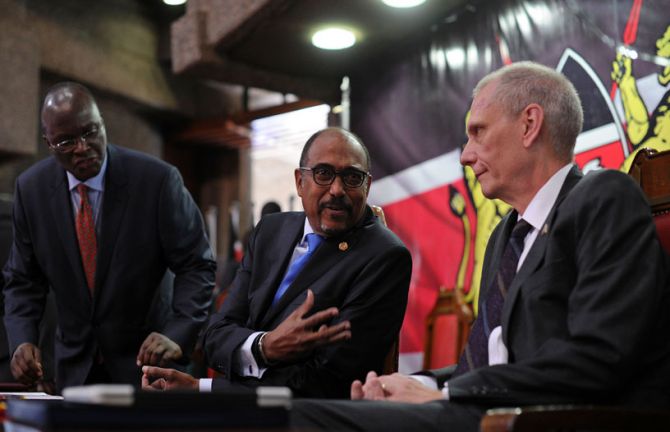
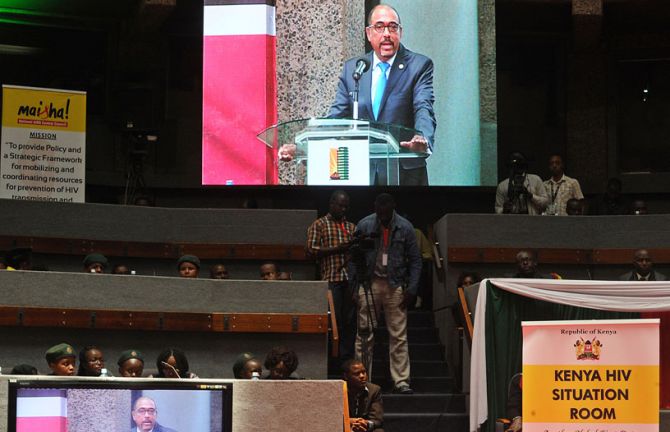

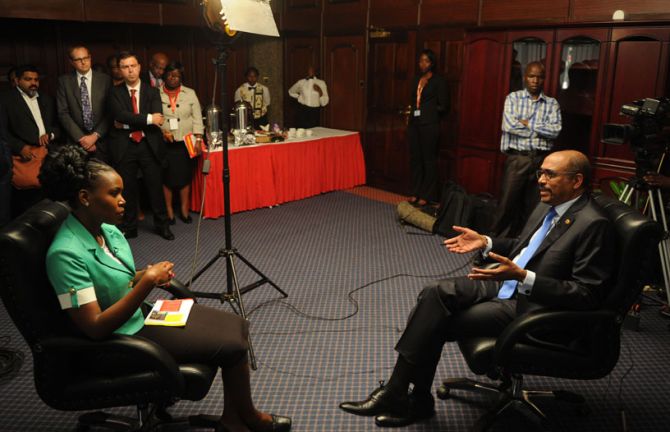
Press Release
UNAIDS and Kenya launch data and technology partnership to Fast-Track progress towards ending the AIDS epidemic by 2030
17 September 2015 17 September 2015Kenya HIV Situation Room centralizes HIV data to ensure more effective and precise programming and reach more people with life-saving services
NAIROBI/GENEVA, 17 September 2015—The President of Kenya, Uhuru Kenyatta, and the Executive Director of UNAIDS, Michel Sidibé, have launched an innovative new tool to track progress and identify gaps in HIV programming in Kenya.
The Kenya HIV Situation Room brings together logistics and service delivery data to produce a more comprehensive picture and understanding of Kenya’s epidemic. The Kenya HIV Situation Room will enable quick feedback on results at the county and community levels and identify any bottlenecks and access issues. Its aim is to speed up and streamline communications between policy-makers and implementers and to help Kenya stay on track to reach its national health targets and improve the lives of people living with and affected by HIV across the country.
“As we all know what gets measured gets done,” said President Kenyatta, “I am pleased that today the Internet based dashboard, the Kenya HIV Situation Room has been unveiled. The use of ICT is a priority for my government”.
Latest data from the Kenya HIV Situation Room shows that Kenya is close to having 800 000 people on treatment.
“High velocity data is critical for insights into a more effective and efficient response to HIV. President Kenyatta’s leadership will help Africa accelerate progress towards ending the AIDS epidemic as part of the sustainable development goals,” said Mr Sidibé. “It can serve in a similar manner to track progress against other diseases, such as tuberculosis and malaria.”
By adopting a people-centred approach to its response to ensure that no one is left behind, Kenya has been able to accelerate progress towards ending its AIDS epidemic. New HIV infections fell by 77% from 250 000 [220 000 - 290 000] from their peak in 1993 to 56 000 [47 000 - 67 000] in 2014.
AIDS-related deaths were reduced by 74% from 130 000 [100 000 - 170 000] at the peak in 2003 to 33 000 [25 000 - 45 000] in 2014 as access to antiretroviral treatment was scaled up. In 2014, around 57% [50%-66%] of adults living with HIV in Kenya had access to the lifesaving medicines and 67% [59%-78%] of pregnant women living with HIV had access to medicine to prevent transmission of the virus to their child. This has resulted in a 74% decline in new HIV infections among children since the peak in 1994.
The Kenya HIV Situation Room will enable AIDS programme staff to localize where efforts need to be intensified. This more accurate programming will help to ensure that mothers have access to HIV testing early on in their pregnancy, that children living with HIV have regular access to care and treatment and that antiretroviral medicines are replenished quickly should stock-outs occur. All information is measured by each facility and service delivery point and fed back to the Kenya HIV Situation Room. The information is anonymous to ensure that full confidentiality is maintained.
The Government of Kenya and UNAIDS have worked together to bring four different data sets into one tool: data from the District Health Information System; information from the Kenya Medical Supply Agency; Kenya’s HIV estimates; and data from the National AIDS Control Council on programme implementers and service delivery.
The Kenya HIV Situation Room, developed by the National AIDS Control Council and the Kenyan Ministry of Health in collaboration with UNAIDS, is supported by the Government of Japan, which contributed resources as part of its continued support to improving monitoring and evaluation of the global AIDS epidemic.
During the event in Nairobi, President Kenyatta also reported progress made in reaching adolescents with HIV services and announced that Kenya would be launching a new Presidential campaign against stigma and discrimination.
“Our constitution guarantees every child a right to education, the highest available standard of health and protection from all forms of discrimination.” said President Kenyatta, “We cannot change anyone’s HIV status but we can change our attitude. Let us stop stigma and let us stop it right now.”
The campaign is designed to encourage young people to know their HIV status as part of the Kenya Fast-Track plan to reduce new HIV infections and increase access to treatment among adolescents and young people.
UNAIDS
The Joint United Nations Programme on HIV/AIDS (UNAIDS) leads and inspires the world to achieve its shared vision of zero new HIV infections, zero discrimination and zero AIDS-related deaths. UNAIDS unites the efforts of 11 UN organizations—UNHCR, UNICEF, WFP, UNDP, UNFPA, UNODC, UN Women, ILO, UNESCO, WHO and the World Bank—and works closely with global and national partners towards ending the AIDS epidemic by 2030 as part of the Sustainable Development Goals. Learn more at unaids.org and connect with us on Facebook, Twitter, Instagram and YouTube.

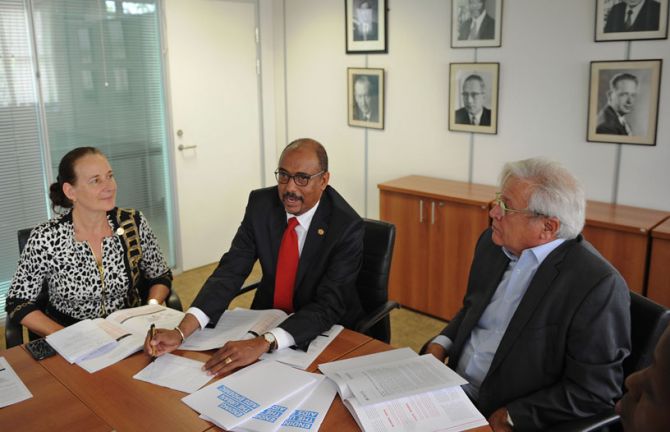
Press Release
UN-Habitat and UNAIDS call for renewed efforts to address HIV in urban areas
18 September 2015 18 September 2015NAIROBI/GENEVA, 18 September 2015—A new report by UN-Habitat and UNAIDS urges cities to do more to respond to HIV epidemics in urban areas. The report outlines that cities and urban areas are particularly affected by HIV, with the 200 cities most affected by the epidemic estimated to account for more than a quarter of all people living with HIV around the world.
The report, Ending the AIDS epidemic: the advantage of cities, was launched in Nairobi, Kenya, by the Executive Director of UN-Habitat, Joan Clos, and the Executive Director of UNAIDS, Michel Sidibé. It reveals that in many countries, rapidly growing cities are home to more than half of all people living with HIV and that many are facing challenges in ensuring access to HIV services.
“Although cities often have resources, viable health systems and the capacity for innovation and service delivery, they sometimes struggle to design and implement focused, effective and rights-based AIDS responses, often leaving behind the most vulnerable and marginalized populations,” said Mr Clos. “Cities are central to bringing a paradigm shift to the AIDS response—a concerted move towards shared responsibility between national and city authorities and community-based organizations in support of local leadership and local evidence to transform the social, political and economic determinants of HIV risk and vulnerability.”
The report highlights that city leaders have a unique opportunity to seize the dynamism, innovation and transformative force of the AIDS response to not only expand HIV services in cities but also address other urban challenges, including social exclusion, inequality and extreme poverty.
“Cities can lead change,” said Mr Sidibé. “As centres for innovation, cities can broker broad partnerships and use their vast resources to provide an inclusive, effective response to HIV based on evidence and grounded in human rights—to leave no one behind.”
In almost half (94) of the 200 cities most affected, HIV is transmitted mainly through unprotected heterosexual sex. In the remaining 106 cities, sex work, unprotected sex between men and injecting drug use are the main drivers of the epidemics. In the Asia–Pacific region, about 25% of all people living with HIV are estimated to reside in 31 major cities, while in western and central Europe, an estimated 60% of all people living with HIV reside in just 20 cities.
According to the new report, data from 30 countries that have conducted nationally representative household-based population surveys show that HIV prevalence among people 15–49 years old living in urban areas is higher than among those living in rural areas in most countries.
Even in countries that are still predominantly rural, cities are often home to disproportionate numbers of people living with HIV. For example, urban areas account for only 18% of Ethiopia’s population but for almost 60% of people living with HIV nationally.
The report outlines the need for cities to establish renewed efforts for an urban health approach that serves the evolving needs of cities and the people who live and work within them. It adds that these measures would help reach the UNAIDS Fast-Track Targets to end the AIDS epidemic as a global health threat by 2030.
The UNAIDS Fast-Track approach requires rapidly scaling up and focusing the implementation and delivery of proven, high-impact HIV prevention and treatment services: an approach that increasingly relies on urban leadership.
A number of countries have introduced specific legislation, national policies or strategies to respond to the needs of people living with and affected by HIV. However many countries continue to lag behind in allocating adequate resources and implementing inclusive and urban-friendly HIV programmes.
UNAIDS
The Joint United Nations Programme on HIV/AIDS (UNAIDS) leads and inspires the world to achieve its shared vision of zero new HIV infections, zero discrimination and zero AIDS-related deaths. UNAIDS unites the efforts of 11 UN organizations—UNHCR, UNICEF, WFP, UNDP, UNFPA, UNODC, UN Women, ILO, UNESCO, WHO and the World Bank—and works closely with global and national partners towards ending the AIDS epidemic by 2030 as part of the Sustainable Development Goals. Learn more at unaids.org and connect with us on Facebook, Twitter, Instagram and YouTube.
Contact
UN-Habitat NairobiTom Osanjo
tel. +254 722 631 599
Tom.Osanjo@unhabitat.org
UNAIDS Nairobi
Norha Restrepo-Lopez
tel. +41 79 447 3404
restrepolopezn@unaids.org
Press centre
Download the printable version (PDF)
Region/country

Press Release
Breakthrough global agreement sharply lowers price of early infant diagnosis of HIV
19 July 2015 19 July 2015New price could help close children’s HIV treatment access gap
VANCOUVER/GENEVA, 19 July 2015—Global partners in the Diagnostics Access Initiative have joined with Roche Diagnostics to announce a 35% reduction in the price for HIV early infant diagnostic technologies. The new access price is US$ 9.40 per test, including proprietary reagents and consumables associated with diagnosing HIV in very young children. Partners involved in the negotiation of this reduced access price include UNAIDS, the Clinton Health Access Initiative Inc., the United States President’s Emergency Plan for AIDS Relief (PEPFAR), the Global Fund to Fight AIDS, Tuberculosis and Malaria and UNITAID.
With peak mortality among children living with HIV occurring at 6-8 weeks, the World Health Organization recommends that all children exposed to HIV receive early infant diagnostic screening within the first two months of life. However, only around half of children exposed to HIV receive early infant diagnostic screening, in part because costs have limited the number of testing platforms currently used in low- and middle-income countries. This has contributed to a major gap in HIV treatment access, as in 2014 only 32% of children living with HIV received antiretroviral therapy compared with 41% of adults living with HIV. Without knowing the HIV status of a child it is impossible to access life-saving treatment. Without treatment, half of all children born with HIV will die by the age of two and the majority will die by the age of five.
“This agreement with Roche Diagnostics is a powerful step towards ending the unconscionable failure of the world to meet the treatment needs of children living with HIV,” said UNAIDS Executive Director Michel Sidibé. “We now need to use this agreement to rapidly scale up diagnostic and treatment services for all children living with HIV, in line with the 90-90-90 target.”
The 90-90-90 target provides that by 2020, 90% of all people living with HIV will know their HIV status; 90% of all people with an HIV diagnosis will receive sustained antiretroviral therapy; and 90% of all people receiving antiretroviral therapy will achieve viral suppression.
“As the leader in HIV diagnostics, Roche is proud to support the UNAIDS 90-90-90 goal by expanding access to quality HIV testing for early infant diagnosis in resource limited settings,” stated Roland Diggelmann, Chief Operating Officer of Roche Diagnostics. “Increased access to early infant diagnosis can provide an impactful contribution for mother and child and contribute to achieving UNAIDS’ goals for controlling and eradicating the HIV/AIDS epidemic.”
This is the second major pricing agreement that partners in the Diagnostics Access Initiative have forged with Roche Diagnostics. In 2014, these partners, joined by the Government of South Africa, announced a 40% reduction in the global price of the leading platform for HIV viral load testing. The new cost for early infant diagnosis is the same as the one negotiated for viral load testing for adults.
The UNAIDS-sponsored Diagnostics Access Initiative, launched at the International AIDS Conference in Australia in July 2014, issued a call to the global community to achieve more affordable pricing for viral load testing. Through the leadership of South Africa and in partnership with CHAI, UNAIDS, UNITAID, The Global Fund and the US President’s Emergency Plan for AIDS Relief (PEPFAR), suppliers were challenged to lower viral load prices, and Roche is the first company to step forward and offer the HIV community an access policy that will accomplish these goals. Other partners in the DAI include the World Health Organization, US Centers for Disease Control and Prevention, African Society for Laboratory Medicine and UNICEF.
“This new agreement reduces prices by 35% for HIV tests for infants," said CHAI Chief Executive Officer Ira C. Magaziner. "This will allow more infants to be tested which will in turn save the lives of many children who will now be able to enter treatment sooner. I congratulate Roche. This represents the latest in a series of agreements where Roche has been a pioneer in bringing state of the art testing to resource poor settings at affordable prices.”
Leading AIDS financing organizations also welcomed the new agreement.
“No child should die because early infant diagnostic screening isn’t available. This price reduction will be a positive step forward to make diagnosis of HIV more widely available and to ensure children exposed to HIV are diagnosed early and receive the life-saving treatment they need," said Ambassador Deborah L. Birx, M.D., U.S. Global AIDS Coordinator and U.S. Representative for Global Health Diplomacy.
“This agreement builds on and supports other efforts of a strong partnership to make the market for viral load testing more competitive and transparent, and that better serves children affected by HIV,” said Mark Dybul, Executive Director of the Global Fund.
“Our collective efforts, including this further reduction in the price of infant testing, will help make it possible to find every newly infected child with HIV and immediately link them to care” said UNITAID's Executive Director, Lelio Marmora. “This encouraging development is aligned with UNITAID’s investments to improve access to better, more affordable HIV testing and treatment for children, which are accelerating innovation of paediatric HIV diagnosis through the optimization of existing laboratory-based systems as well as the introduction of novel technologies at and near the point-of-care.”
UNAIDS
The Joint United Nations Programme on HIV/AIDS (UNAIDS) leads and inspires the world to achieve its shared vision of zero new HIV infections, zero discrimination and zero AIDS-related deaths. UNAIDS unites the efforts of 11 UN organizations—UNHCR, UNICEF, WFP, UNDP, UNFPA, UNODC, UN Women, ILO, UNESCO, WHO and the World Bank—and works closely with global and national partners towards ending the AIDS epidemic by 2030 as part of the Sustainable Development Goals. Learn more at unaids.org and connect with us on Facebook, Twitter, Instagram and YouTube.
Press centre
Download the printable version (PDF)

Press Release
Success in reaching ’15 by 15’ shows that we can end the AIDS epidemic
19 July 2015 19 July 2015New UNAIDS report describes how the world achieved the global treatment target
VANCOUVER, 19 July 2015—Following up on United Nations Secretary-General Ban Ki-moon's announcement on 14 July that the world had reached the target of providing antiretroviral therapy to 15 million people living with HIV, UNAIDS is releasing a new report that describes the factors that helped the world achieve the '15 by 15' target. Launched at the 8th International AIDS Society Conference on HIV Pathogenesis, Treatment and Prevention in Vancouver, Canada, 15 by 15: A global target achieved describes how diverse stakeholders and constituencies united in a common global undertaking to save lives.
Lessons learned in the successful global push to provide antiretroviral therapy to 15 million people by 2015 provide a roadmap for ending the AIDS epidemic as a public health threat. As a central component of the effort to end the epidemic, the world has embraced a new target for antiretroviral therapy. By 2020: (a) 90% of all people living with HIV will know their HIV status, (b) 90% of all people with an HIV diagnosis will receive sustained antiretroviral therapy, and (c) 90% of all people receiving antiretroviral therapy will achieve viral suppression.
“This is the first time in the history of global health that we have reached a treatment target by the deadline,” said UNAIDS Executive Director, Michel Sidibé. “If anyone doubted this in the past, it is now clearer than ever that bold, ambitious targets drive global health progress. We now need to take what we have learned in the '15 by 15' movement and do what it takes to end the AIDS epidemic once and for all.”
Ingredients for success in the '15 by 15' movement
The ’15 by 15’ target was adopted at a United Nations High Level Meeting in 2011, as part of the Political Declaration on HIV and AIDS: Intensifying Our Efforts to Eliminate HIV and AIDS. The new UNAIDS report focuses on the years 2011-2015, describing what happened to make achievement of the goal possible. The report’s key findings include the following:
- The world exhibited strong political commitment to the '15 by 15' target. Even as new challenges emerged, global leaders remained committed to the HIV treatment target. The commitment of political leaders has been matched and magnified by the engagement and leadership of communities affected by the epidemic.
- Funding for HIV testing and treatment services increased. Countries themselves significantly increased domestic allocations for HIV testing and treatment programmes, even as international partners, such as the United States President’s Emergency Plan for AIDS Relief and the Global Fund to Fight AIDS, Tuberculosis and Malaria, provided essential assistance.
- Knowledge of HIV status substantially increased. In 2014, for the first time ever, more than half of all people living with HIV know their HIV status.
- Prices for antiretroviral regimens and key diagnostic tools continued to decline. Generic competition in the pharmaceutical industry has helped ensure that prices for life-saving drugs are affordable.
- The efficiency and quality of HIV treatment programmes have improved. Per-patient treatment costs in U.S.-supported programmes have fallen by 70%.
- Innovative service delivery models have enhanced the reach and impact of treatment programmes. Across the world, innovative service models, many of them community-driven, are showing how to expand treatment access while saving money.
- HIV-related stigma has declined. As HIV treatment is brought to scale, studies show that discriminatory attitudes towards people living with HIV decline.
Leveraging the '15 to 15' success to achieve the 90-90-90 target
The essential lessons from '15 by 15' are immediately valuable for global efforts to lay the foundation to end the AIDS epidemic as a public health threat by 2030. Achievement of the 90-90-90 target, along with ambitious new targets for primary HIV prevention and non-discrimination, would reduce the number of new HIV infections by 89% by 2030 and the number of AIDS-related deaths by 81%.
“We have no time to waste, as the next five years represent a brief window of opportunity,” said Mr Sidibé. “We need to put the lessons we have learned from '15 by 15' to use to 'fast-track' the AIDS response and achieve the 90-90-90 target.”
The new report outlines emerging challenges that the AIDS response must face as it works to achieve the 90-90-90 target. These include uncertainties regarding the financial sustainability of HIV treatment scale-up and market dynamics that potentially imperil the future affordability of the second- and third-line antiretroviral regimens that more and more people living with HIV will need.
To meet these challenges, the new report outlines strategic actions that the world needs to take. Political commitment to end the epidemic will be essential, as will concerted efforts to engage and empower communities to deliver HIV testing and treatment services. New investments will be needed, especially as spending towards ambitious new prevention, treatment and non-discrimination targets yield US$ 17 in savings for every US$ 1 invested. Immediate actions are needed to ensure a robust, uninterrupted supply of affordable medicines, including building local manufacturing capacity in sub-Saharan Africa. In addition, structural barriers to service access, including those caused by punitive laws and policies, must be removed.
UNAIDS
The Joint United Nations Programme on HIV/AIDS (UNAIDS) leads and inspires the world to achieve its shared vision of zero new HIV infections, zero discrimination and zero AIDS-related deaths. UNAIDS unites the efforts of 11 UN organizations—UNHCR, UNICEF, WFP, UNDP, UNFPA, UNODC, UN Women, ILO, UNESCO, WHO and the World Bank—and works closely with global and national partners towards ending the AIDS epidemic by 2030 as part of the Sustainable Development Goals. Learn more at unaids.org and connect with us on Facebook, Twitter, Instagram and YouTube.
Press centre
Download the printable version (PDF)

Press Release
UNAIDS announces that the goal of 15 million people on life-saving HIV treatment by 2015 has been met nine months ahead of schedule
14 July 2015 14 July 2015The world has exceeded the AIDS targets of Millennium Development Goal (MDG) 6 and is on track to end the AIDS epidemic by 2030 as part of the Sustainable Development Goals (SDGs).
ADDIS ABABA/GENEVA, 14 July 2015—The AIDS targets of MDG 6—halting and reversing the spread of HIV—have been achieved and exceeded, according to a new report released today by the Joint United Nations Programme on HIV/AIDS (UNAIDS). New HIV infections have fallen by 35% and AIDS-related deaths by 41%. The global response to HIV has averted 30 million new HIV infections and nearly 8 million (7.8 million) AIDS-related deaths since 2000, when the MDGs were set.
“The world has delivered on halting and reversing the AIDS epidemic,” said Ban Ki-moon, Secretary-General of the United Nations. “Now we must commit to ending the AIDS epidemic as part of the Sustainable Development Goals.”
Released in Addis Ababa, Ethiopia, on the sidelines of the Third International Conference on Financing for Development, the report demonstrates that the response to HIV has been one of the smartest investments in global health and development, generating measurable results for people and economies. It also shows that the world is on track to meet the investment target of US$ 22 billion for the AIDS response by 2015 and that concerted action over the next five years can end the AIDS epidemic by 2030.
“Fifteen years ago there was a conspiracy of silence. AIDS was a disease of the “others” and treatment was for the rich and not for the poor,” said Michel Sidibé, Executive Director of UNAIDS. “We proved them wrong, and today we have 15 million people on treatment—15 million success stories.”
How AIDS changed everything—MDG 6: 15 years, 15 lesson of hope from the AIDS response celebrates the milestone achievement of 15 million people on antiretroviral treatment—an accomplishment deemed impossible when the MDGs were established 15 years ago. It also looks at the incredible impact the AIDS response has had on people’s lives and livelihoods, on families, communities and economies, as well as the remarkable influence the AIDS response has had on many of the other MDGs. The report includes specific lessons to take forward into the SDGs, as well as the urgent need to front-load investments and streamline programmes for a five-year sprint to set the world on an irreversible path to end the AIDS epidemic by 2030.
Achieving MDG 6: halting and reversing the spread of HIV
In 2000, the world was witnessing an extraordinary number of new HIV infections. Every day, 8500 people were becoming newly infected with the virus and 4300 people were dying of AIDS-related illnesses. How AIDS changed everything describes how, against all odds, huge rises in new HIV infections and AIDS-related deaths were halted and reversed.
New HIV infections
In 2000, AIDS began to be taken seriously. Far-sighted global leadership rallied, and the response that ensued made history. Between 2000 and 2014, new HIV infections dropped from 3.1 million to 2 million, a reduction of 35%. Had the world stood back to watch the epidemic unfold, the annual number of new HIV infections is likely to have risen to around 6 million by 2014.
In 2014, the report shows that 83 countries, which account for 83% of all people living with HIV, have halted or reversed their epidemics, including countries with major epidemics, such as India, Kenya, Mozambique, South Africa and Zimbabwe.
“As a mother living with HIV I did everything in my capacity to ensure my children were born HIV-free, said Abiyot Godana, Case Manager at the Entoto Health Center. “My husband has grabbed my vision of ending AIDS and together we won’t let go of this hope. Our two children are a part of an AIDS-free generation and will continue our legacy.” Ethiopia has made significant progress in preventing new HIV infections among children. In 2000, around 36 000 children became infected with HIV. However, by 2014 that number had dropped by 87%, to 4800, as coverage of antiretroviral therapy to prevent new HIV infections among children increased to 73%.
Stopping new HIV infections among children has been one of the most remarkable successes in the AIDS response. In 2000, around 520 000 children became newly infected with HIV. In the absence of antiretroviral therapy, children were dying in large numbers. This injustice prompted the world to act—ensuring that pregnant women living with HIV had access to medicines to prevent their children from becoming infected with the virus became a top global priority.
The unprecedented action that followed achieved results. Between 2000 and 2014, the percentage of pregnant women living with HIV with access to antiretroviral therapy rose to 73% and new HIV infections among children dropped by 58%.
By 2014, UNAIDS estimates that 85 countries had less than 50 new HIV infections among children per year, and in 2015 Cuba became the first country to be certified by the World Health Organization as having eliminated new HIV infections among children.
AIDS-related deaths
The second, critical measure for determining the success of MDG 6 is progress in halting and reversing the number of AIDS-related deaths. In 2000, AIDS was a death sentence. People who became infected with HIV had just a few years to live and the vast majority of children born with the virus died before they reached their fifth birthday.
Against incredible odds, the pace of antiretroviral therapy scale-up increased, ensuring more people remained alive and well. By 2005, AIDS-related deaths began to reverse, falling by 41% from 2005 to 2014.
Making the impossible, possible—15 million people on HIV treatment
Ensuring access to antiretroviral therapy for 15 million people is an achievement deemed impossible 15 years ago. In 2000, fewer than 1% of people living with HIV in low- and middle-income countries had access to treatment, as the sky-high prices of medicines—around US$ 10 000 per person per year—put them out of reach. The inequity of access and injustice sparked global moral outrage, which created one of the most defining achievements of the response to HIV—massive reductions in the price of life-saving antiretroviral medicines.
By 2014, advocacy, activism, science, political will and a willingness by the pharmaceutical companies has brought the price of medicines for HIV down by 99%, to around US$ 100 per person per year for first-line formulations.
In 2014, 40% of all people living with HIV had access to antiretroviral therapy, a 22-fold increase over the past 14 years. In sub-Saharan Africa, 10.7 million people had access, 6.5 million (61%) of whom were women. Ensuring treatment for 15 million people around the world proves beyond a doubt that treatment can be scaled up even in resource-poor settings.
As access to treatment increased, the world raised the bar and has repeatedly set ambitious targets, culminating in today’s call of ensuring access to treatment for all 36.9 million people living with HIV.
Progress in ensuring access to HIV treatment has, however, been slower for children than for adults. As of 2014, only 32% of the 2.6 million children living with HIV had been diagnosed and only 32% of children living with HIV had access to antiretroviral therapy.
While the price of first-line medicines has reduced significantly, the prices of second and new generation medicines are still much too high and need to be urgently negotiated down.
Knowledge ensures access
How AIDS changed everything includes exciting new information about access to treatment once people know their HIV status. Some 75% of people who know they have the virus are accessing antiretroviral therapy, showing that the majority of people do come forward for treatment and have access once they are diagnosed with HIV.
This emphasizes the urgent need to scale up HIV testing. In 2014, only 54% (19.8 million) of the 36.9 million people who are living with HIV knew that they are living with the virus.
An investment, not a cost
How AIDS changed everything shows how the economic impact is one of the greatest achievements of the response to HIV and one that will continue to yield results in years to come.
“The world went from millions to billions and each dollar invested today is producing a US$ 17 return,” said Mr Sidibé. “If we frontload investments and Fast-Track our efforts over the next five years, we will end the AIDS epidemic by 2030.”
Since 2000, an estimated US$ 187 billion has been invested in the AIDS response, US$ 90 billion of which came from domestic sources. By 2014, around 57% of AIDS investments came from domestic sources and 50 countries invested more than 75% of their responses from their own budgets—a big success for country ownership.
The United States of America has invested more than US$ 59 billion in the AIDS response and is the largest international contributor. The Global Fund to Fight AIDS, Tuberculosis and Malaria invests nearly US$ 4 billion each year towards AIDS programmes and has disbursed more than US$ 15.7 billion since its creation in 2002.
The report also shows that the next five years will be critical. Front-loading investments in the fragile five-year window up to 2020 could reduce new HIV infections by 89% and AIDS-related deaths by 81% by 2030.
Current investments in the AIDS response are around US$ 22 billion a year. That would need to be increased by US$ 8–12 billion a year in order to meet the Fast-Track Target of US$ 31.9 billion in 2020. By meeting the 2020 target, the need for resources would begin to permanently decline, reducing to US$ 29.3 billion in 2030 and far less in the future. This would produce benefits of more than US$ 3.2 trillion that extend well beyond 2030.
The report underscores that international assistance, especially for low-income and low-middle-income countries, will be necessary in the short term before sustainable financing can be secured in the long term. Sub-Saharan Africa will require the largest share of global AIDS financing: US$ 15.8 billion in 2020.
Countries that took charge have produced results
Countries that rapidly mounted robust responses to their epidemics saw impressive results. In 1980, life expectancy in Zimbabwe was around 60 years of age. In 2000, when the MDGs were set, life expectancy had dropped to just 44 years of age, largely owing to the impact of the AIDS epidemic. By 2013, however, life expectancy had risen again to 60 years of age as new HIV infections were reduced and access to antiretroviral treatment expanded.
Ethiopia has been particularly affected by the AIDS response, with 73 000 people dying of AIDS-related illnesses in 2000. Concerted efforts by the Ethiopian government have secured a drop of 71% in AIDS-related deaths between the peak in 2005 and 2014.
In Senegal, one of the earliest success stories of the global AIDS response, new HIV infections have declined by more than 87% since 2000. Similarly, Thailand, another success story, has reduced new HIV infections by 71% and AIDS-related deaths by 64%.
South Africa turned around its decline in life expectancy within 10 years, rising from 51 years in 2005 to 61 by the end of 2014, on the back a massive increase in access to antiretroviral therapy. South Africa has the largest HIV treatment programme in the world, with more than 3.1 million people on antiretroviral therapy, funded almost entirely from domestic sources. In the last five years alone, AIDS-related deaths have declined by 58% in South Africa.
Leaving no one behind
Much progress has been made in expanding HIV prevention services for key populations, even though significant gaps remain. Although more than 100 countries criminalize some form of sex work, sex workers continue to report the highest levels of condom use in the world—more than 80% in most regions.
Drug use remains criminalized in most countries, yet many do allow access to needle–syringe programmes and opioid substitution therapy. In 2014, HIV prevalence appears to have declined among people who inject drugs in almost all regions.
However, new HIV infections are rising among men who have sex with men, notably in western Europe and North America, where major declines were previously experienced. This indicates that HIV prevention efforts need to be adapted to respond to the new realities and needs of men who have sex with men.
The number of adult men who have opted for voluntary medical male circumcision to prevent HIV transmission continues to increase. From 2008 to December 2014, about 9.1 million men in 14 priority countries opted to be circumcised. In 2014 alone, 3.2 million men in 14 priority countries were circumcised. Ethiopia and Kenya have both already exceeded their target of 80% coverage.
Tuberculosis (TB) remains a leading cause of death among people living with HIV, accounting for one in five AIDS-related deaths globally. However, between 2004 and 2014, TB deaths declined by 33% thanks to the rapid increase in antiretroviral treatment, which reduces the risk that a person living with HIV will develop TB by 65%.
Some 74 countries reported having laws in place prohibiting discrimination against people living with HIV. However, at present, 61 countries have legislation that allows for the criminalization of HIV non-disclosure, exposure or transmission. In 76 countries, same-sex sexual practices are criminalized. In seven countries they are punishable by death.
Transgender people are not recognized as a separate gender in most countries and are generally absent from public policy formulation and social protection programmes. The world remains far short of achieving its goal of eliminating gender inequalities and gender-based violence and abuse.
Better data
Countries have invested heavily in monitoring and evaluating their responses to HIV. In 2014, 92% of United Nations Member States reported HIV data to UNAIDS. State-of-the-art epidemic monitoring, data collection and reporting have made HIV data the most robust in the world, far more complete than data for any other disease. This has not only enabled the world to have a clear picture of HIV trends, it has also enabled HIV programming to be tailored to the specific dynamics of each country’s epidemic.
Together with How AIDS changed everything, UNAIDS is launching its new data visualization feature AIDSinfo. This innovative visualization tool allows users to view global, regional and national data on HIV through easy-to-use maps, graphs and tables adapted for all devices.
How AIDS changed everything
The UNAIDS book gives a vivid and insightful description of the impact the AIDS response has had on global health and development over the past 15 years and of the incredible importance of the lessons learned for ensuring the success of the SDGs.
How AIDS changed everything—MDG 6: 15 years, 15 lesson of hope from the AIDS response is both a look back on the journey of the last 15 years and a look forward to the future of the AIDS response and the path to ending the AIDS epidemic by 2030.
The flagship publication from UNAIDS was released at a community event at Zewditu Hospital in Addis Ababa, Ethiopia, on 14 July 2015 by United Nations Secretary-General Ban Ki-moon, Minister of Health, Kesetebirhan Admassu of the Federal Democratic Republic of Ethiopia, Executive Director of UNAIDS Michel Sidibé and Abiyot Godana, Case Manager at the Entoto Health Center.
2014/2015* GLOBAL STATISTICS
|
15 million* people accessing antiretroviral therapy (March 2015) 36.9 million [34.3 million–41.4 million] people globally were living with HIV 2 million [1.9 million–2.2 million] people became newly infected with HIV 1.2 million [980 000–1.6 million] people died from AIDS-related illnesses |
THE STORY CONTINUES AT THE WHITETABLEGALLERY.ORG
UNAIDS
The Joint United Nations Programme on HIV/AIDS (UNAIDS) leads and inspires the world to achieve its shared vision of zero new HIV infections, zero discrimination and zero AIDS-related deaths. UNAIDS unites the efforts of 11 UN organizations—UNHCR, UNICEF, WFP, UNDP, UNFPA, UNODC, UN Women, ILO, UNESCO, WHO and the World Bank—and works closely with global and national partners towards ending the AIDS epidemic by 2030 as part of the Sustainable Development Goals. Learn more at unaids.org and connect with us on Facebook, Twitter, Instagram and YouTube.
Contact
UNAIDS EthiopiaRahel Gettu
tel. +251 911 502 228
gettur@unaids.org
UNAIDS Geneva
tel. +41 22 791 3873 / M. +41 79 447 3404
communications@unaids.org
Press centre
Download the printable version (PDF)

Press Release
Kaiser/UNAIDS study finds slight increase in donor government funding for AIDS in 2014
14 July 2015 14 July 2015Increase mainly due to U.K. however, funding from half of fourteen donor governments declined
As world leaders meet to discuss global financing for development, a new report from the Kaiser Family Foundation and the Joint United Nations Programme on HIV/AIDS (UNAIDS) finds that although there was a slight increase in funding to respond to HIV in low- and middle-income countries in 2014, seven of 14 donor governments actually decreased funding, two remained flat and funding from five governments increased.
Overall donor government funding for the AIDS response increased slightly, by less than 2 percent in 2014 to US$8.6 billion. After adjusting for inflation and exchange rates, the 2014 increase was 1%.
Still, 2014 funding levels are the highest to date. Funding began to rise again recently following a dip after the global economic crisis.
Most of the increase in HIV funding in 2014 can be attributed to the United Kingdom, without which overall funding would have dropped. In addition, contributions to the Global Fund to Fight AIDS, Tuberculosis and Malaria, an increasing channel of HIV support for some donors over time, went up overall, while bilateral funding went down.
"International assistance for AIDS has been instrumental in expanding access to HIV treatment and in funding HIV prevention programmes for people most affected by HIV,” said Luiz Loures, Deputy Executive Director of UNAIDS. "The donor community must now build on current funding levels to help close the resource gap to end the AIDS epidemic by 2030."
"Funding for HIV continued to be a priority for donor governments in 2014, but how funding for HIV will fare in the post-2015 era, with its much more crowded development agenda and competing demands on donors remains to be seen," said Kaiser Family Foundation Vice President Jen Kates, Director of Global Health and HIV Policy.
The U.S. government remained the largest donor government to HIV in the world but funding remained essentially flat, totaling US$5.6 billion in 2014, as it did in 2013. The next largest funder was the U.K., at US$1.1 billion.
In addition to the U.K. increase, Italy, Japan, the Netherlands, and Norway also increased total assistance for HIV in 2014, while Germany and the U.S. remained essentially flat. Australia, Canada, Denmark, France, Ireland, Sweden, and the European Commission decreased assistance for HIV in 2014.
The U.S. accounted for nearly two-thirds (64.5%) of total funding (bilateral and multilateral) from donor governments, followed by the U.K. (12.9%), France (3.7%), Germany (3.2%), and the Netherlands (2.5%).
The new report, produced as a partnership between the Kaiser Family Foundation and UNAIDS, provides the latest data available on donor funding disbursements based on data provided by governments. It includes their bilateral assistance to low- and middle-income countries and contributions to the Global Fund as well as UNITAID.
The full analysis is available online.
Kaiser Family Foundation
Filling the need for trusted information on national health issues, the Kaiser Family Foundation is a nonprofit organization based in Menlo Park, California.
UNAIDS
The Joint United Nations Programme on HIV/AIDS (UNAIDS) leads and inspires the world to achieve its shared vision of zero new HIV infections, zero discrimination and zero AIDS-related deaths. UNAIDS unites the efforts of 11 UN organizations—UNHCR, UNICEF, WFP, UNDP, UNFPA, UNODC, UN Women, ILO, UNESCO, WHO and the World Bank—and works closely with global and national partners towards ending the AIDS epidemic by 2030. Learn more at unaids.org and connect with us on Facebook and Twitter.
Contact
Kaiser Family FoundationKatie Smith
tel. +1 202 347-5270
ksmith@kff.org
UNAIDS
Sophie Barton-Knott
tel. +41 79 514 6896
bartonknotts@unaids.org
Resources

Press Release
UNAIDS launches conceptual digital gallery on HIV to reach out and engage new audiences
14 July 2015 14 July 2015UNAIDS opens first exhibition on new digital gallery as UNAIDS launches its new book, How AIDS changed everything—MDG 6: 15 years, 15 lessons of hope from the AIDS response.
GENEVA, 14 July 2015—UNAIDS launched today the White Table Gallery, a new digital platform that will host exhibitions relating to the AIDS response. The first exhibition, entitled Everyday Objects and a Cat, shows how “things” can hold special meanings in the AIDS response and represent bigger ideas around health and development.
The new gallery is an extension of the new UNAIDS book, How AIDS changed everything—MDG 6: 15 years, 15 lessons of hope from the AIDS response. The book includes lessons learned from reaching the AIDS targets of Millennium Development Goal 6 that can inform and transform the work towards achieving the sustainable development goals.
“Innovation and inspiration have been key to the success of the AIDS response. By continually pushing ourselves to ask “what’s new and what’s next” we have remained at the cutting edge of global health,” said Michel Sidibé, Executive Director of UNAIDS. “Platforms like the White Table Gallery will enable us to engage with new creative partners.”
As in every exhibition, individual pieces tell their own story, but also contribute to explain and give meaning to the bigger picture of which they form a part. The White Table Gallery intends to explain the AIDS epidemic using digital media in order to raise awareness and engage young people. The digital platform uses photos, videos, images and audio files to capture stories and moments in time. Everyday Objects and a Cat will run through to October 2015.
UNAIDS
The Joint United Nations Programme on HIV/AIDS (UNAIDS) leads and inspires the world to achieve its shared vision of zero new HIV infections, zero discrimination and zero AIDS-related deaths. UNAIDS unites the efforts of 11 UN organizations—UNHCR, UNICEF, WFP, UNDP, UNFPA, UNODC, UN Women, ILO, UNESCO, WHO and the World Bank—and works closely with global and national partners towards ending the AIDS epidemic by 2030 as part of the Sustainable Development Goals. Learn more at unaids.org and connect with us on Facebook, Twitter, Instagram and YouTube.
Press centre
Download the printable version (PDF)
